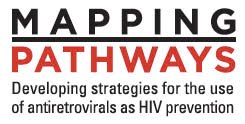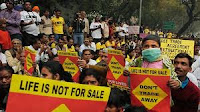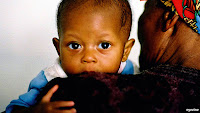Joseph Romano, Ph.D., has been involved in HIV/AIDS research and development for 20 years. In the last decade, he has focused on the development of HIV microbicides. We checked in with Joseph to get his thoughts on a number of things: the microbicide pipeline, the recent HPTN 052 results, clinical trials and the hardest part about his job.
MP: How would you characterize the state of the microbicide pipeline? Right now, the main focus seems to be on ARV-based products. Is there a chance that we may see some non-ARV-based microbicide products in the near future?
JR: The current focus on ARV-based products is the result of some earlier failures with non-ARV microbicide products, and the lack of a robust set of other options to develop. ARVs are very potent and very specific inhibitors of HIV infection, and recent studies have shown that vaginal gels containing an ARV (tenofovir) as well as oral use of ARV pills (Truvada) can prevent transmission of HIV in specific populations. It is likely that these positive results will fuel the development of additional ARV-based microbicide products in the foreseeable future.
However, there remains a need for something other than ARVs. One of the concerns with ARV-based microbicides is over the issue of resistance. In situations where someone is HIV positive and unaware of their status, the use of a microbicide product could lead to the selection of resistance in this person, and that could compromise the ability to treat this person in the future with same class of ARV therapeutics. This is why large efficacy studies involving ARV-based prevention products are typically conducted with a great deal of HIV testing, and are also accompanied by seroconverter trials to study HIV infections that do occur in participants during microbicide trials. Another issue with ARVs is that they are very specific and are typically only active against HIV. Compounds that afford a wider spectrum of protection against other STIs would be more desirable.
There are a number of groups working on things like plant lectins and natural defence molecules that are part of the innate immune system. There are also groups exploring herbal products or extracts from such products. These alternative products are typically not as potent as ARVs and are mostly in very early stages of investigation and development.
MP: What are your thoughts on the preliminary findings from the HPTN 052 study?
JR: The level of efficacy seen in the HPTN052 study is stunning, and is extremely important on several fronts. First, in terms of the potential of this strategy to reduce transmission, it is clearly an effective option. The study also established the benefits to infected individuals of employing treatment regimens to HIV-positive people with the inclusion parameters used for the trial.
Of course, there are some issues associated with this strategy as well. Proper product adherence over the long term will be necessary, and this is typically a challenge. Rollout of this strategy will also present challenges, in terms of cost and with regard to capacity to properly administer care. It is possible that these results will also raise questions on the value of providing drugs to infected individuals as per HPTN 052, versus distribution of drugs to uninfected populations as per an oral PrEP strategy.
However, in terms of the results themselves, this is an extremely important outcome which will likely have significant ramifications going forward. It will be important to remember that despite these findings, the development of other prevention strategies for HIV-negative people will remain an important priority.
MP: What issues are you most concerned about at the moment?
JR: I have two concerns regarding microbicides and HIV prevention product strategies. First, a clear lesson from recent (as well as earlier) clinical trials is that product adherence remains a major challenge to the field. Trial participant compliance with product use directions is difficult to achieve, and perhaps even more difficult to measure. Thus, the dependence of these strategies on proper compliance with product use by trial participants (as well as populations receiving access to such products after approval) will always present a challenge to achieving adequate efficacy. There needs to be some innovative thinking and development with regard to achieving higher and consistent rates of proper product adherence. Novel drug delivery technologies and strategies that reduce the dependence on users to bear the burden of compliance are essential. Innovative ways to measure product adherence accurately must also be developed in order to achieve proper evaluation of products in clinical trials.
My second concern is with regard to efficacy trial strategies in the post-placebo control era. It will not be feasible from a cost or capacity perspective to run multiple non-inferiority studies with HIV prevention products. Innovative trial design as well as the development of robust surrogates for efficacy will be crucial for the field going forward.
MP: What is the hardest part about your job?
JR: There are two things: The slow pace and high failure rate that are inherent in the drug development process, and the effects of resource constraints on good science. Neither of these is specific to microbicides or HIV prevention – unfortunately they are a part of drug development in any setting.
Joseph Romano, Ph.D., is President at the NWJ Group, LLC. He provides strategic and operational consulting in the fields of pharmaceutical and biotechnology, with expertise in drug, vaccine, device and diagnostics development.
[Content that is linked from other sources is for informational purposes and should not construe a Mapping Pathways position.]
MP: How would you characterize the state of the microbicide pipeline? Right now, the main focus seems to be on ARV-based products. Is there a chance that we may see some non-ARV-based microbicide products in the near future?
JR: The current focus on ARV-based products is the result of some earlier failures with non-ARV microbicide products, and the lack of a robust set of other options to develop. ARVs are very potent and very specific inhibitors of HIV infection, and recent studies have shown that vaginal gels containing an ARV (tenofovir) as well as oral use of ARV pills (Truvada) can prevent transmission of HIV in specific populations. It is likely that these positive results will fuel the development of additional ARV-based microbicide products in the foreseeable future.
However, there remains a need for something other than ARVs. One of the concerns with ARV-based microbicides is over the issue of resistance. In situations where someone is HIV positive and unaware of their status, the use of a microbicide product could lead to the selection of resistance in this person, and that could compromise the ability to treat this person in the future with same class of ARV therapeutics. This is why large efficacy studies involving ARV-based prevention products are typically conducted with a great deal of HIV testing, and are also accompanied by seroconverter trials to study HIV infections that do occur in participants during microbicide trials. Another issue with ARVs is that they are very specific and are typically only active against HIV. Compounds that afford a wider spectrum of protection against other STIs would be more desirable.
There are a number of groups working on things like plant lectins and natural defence molecules that are part of the innate immune system. There are also groups exploring herbal products or extracts from such products. These alternative products are typically not as potent as ARVs and are mostly in very early stages of investigation and development.
MP: What are your thoughts on the preliminary findings from the HPTN 052 study?
JR: The level of efficacy seen in the HPTN052 study is stunning, and is extremely important on several fronts. First, in terms of the potential of this strategy to reduce transmission, it is clearly an effective option. The study also established the benefits to infected individuals of employing treatment regimens to HIV-positive people with the inclusion parameters used for the trial.
Of course, there are some issues associated with this strategy as well. Proper product adherence over the long term will be necessary, and this is typically a challenge. Rollout of this strategy will also present challenges, in terms of cost and with regard to capacity to properly administer care. It is possible that these results will also raise questions on the value of providing drugs to infected individuals as per HPTN 052, versus distribution of drugs to uninfected populations as per an oral PrEP strategy.
However, in terms of the results themselves, this is an extremely important outcome which will likely have significant ramifications going forward. It will be important to remember that despite these findings, the development of other prevention strategies for HIV-negative people will remain an important priority.
MP: What issues are you most concerned about at the moment?
JR: I have two concerns regarding microbicides and HIV prevention product strategies. First, a clear lesson from recent (as well as earlier) clinical trials is that product adherence remains a major challenge to the field. Trial participant compliance with product use directions is difficult to achieve, and perhaps even more difficult to measure. Thus, the dependence of these strategies on proper compliance with product use by trial participants (as well as populations receiving access to such products after approval) will always present a challenge to achieving adequate efficacy. There needs to be some innovative thinking and development with regard to achieving higher and consistent rates of proper product adherence. Novel drug delivery technologies and strategies that reduce the dependence on users to bear the burden of compliance are essential. Innovative ways to measure product adherence accurately must also be developed in order to achieve proper evaluation of products in clinical trials.
My second concern is with regard to efficacy trial strategies in the post-placebo control era. It will not be feasible from a cost or capacity perspective to run multiple non-inferiority studies with HIV prevention products. Innovative trial design as well as the development of robust surrogates for efficacy will be crucial for the field going forward.
MP: What is the hardest part about your job?
JR: There are two things: The slow pace and high failure rate that are inherent in the drug development process, and the effects of resource constraints on good science. Neither of these is specific to microbicides or HIV prevention – unfortunately they are a part of drug development in any setting.
Joseph Romano, Ph.D., is President at the NWJ Group, LLC. He provides strategic and operational consulting in the fields of pharmaceutical and biotechnology, with expertise in drug, vaccine, device and diagnostics development.
[Content that is linked from other sources is for informational purposes and should not construe a Mapping Pathways position.]


























